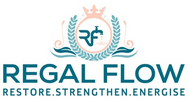
Reverse Osmosis and UV Water Filters: The Ultimate Guide for UK Homes
If your tap water has a chlorine tang, RO and UV systems are the ultimate solution for zapping bacteria and filtering out chemicals. For those who want to examine the underlying science, our In-Depth Insights into Reverse Osmosis Systems and Applications is the perfect starting point, but follow along here as we break down why this specific combination is a game-changer for your health.
Understanding Reverse Osmosis (RO)
Ever wondered why your tap water sometimes smells a bit… off? Or why your kettle builds up limescale faster than you can say “brew”? That’s where reverse osmosis (RO) steps in. A clever bit of kit that transforms your average tap water into something truly refreshing. It's not magic, but it might as well be. RO is a popular home water filtration method in the UK, especially in areas with hard or chemically treated water. Let’s break it down.
Filtration Mechanism
Reverse osmosis uses a thin, semi-permeable membrane to filter water. This membrane has teeny-tiny pores—about 0.0001 microns in size. Water gets pushed through under pressure, and only the pure stuff makes it through. Before that, though, the system usually puts water through a pre-filter and a carbon filter to catch any larger particles and chlorine. It’s like a mini water treatment plant tucked away under your sink.
Contaminants Targeted
RO is brilliant at tackling:
-
Heavy metals like lead and mercury
-
Chlorine and its lingering taste
-
Fluoride, pesticides, and herbicides
-
Microplastics
-
Excess salts
If your tap water smells like a swimming pool or you’re worried about what’s in it, RO gives you peace of mind in a glass.
Understanding Ultraviolet (UV) Water Filters
Now, here’s where things get high-tech (but still easy to follow). While RO is all about removing particles, UV is the go-to for killing off the invisible nasties e.g bacteria, viruses, and all the things you can’t see but definitely don’t want in your brew.
Disinfection Mechanism
UV filters work by shining ultraviolet light onto flowing water. No chemicals. No taste changes. Just pure, germ-free water. The UV light zaps the DNA of microorganisms, making it impossible for them to multiply or cause harm. It’s a bit like flipping the “off switch” on harmful microbes simple but highly effective.
Microorganisms Targeted
UV filters are great at destroying:
-
E. coli
-
Salmonella
-
Hepatitis A
-
Giardia
-
Cryptosporidium
Basically, anything that could make you poorly gets stopped in its tracks. Perfect for rural areas, or if you are on well water or just want extra protection.
Comparative Analysis of RO and UV Filters
RO and UV filters are both excellent, but they don’t do the same job. Think of them as a dynamic duo, each handling different threats in your water.
Types of Contaminants Addressed
| Filter Type | Targets | Doesn’t Address |
|---|---|---|
| RO | Chemicals, metals, salts, plastics | Bacteria and viruses |
| UV | Bacteria, viruses, protozoa | Chemicals and solids |
RO handles the physical and chemical junk. UV deals with germs. Together? They’ve got you covered.
Maintenance Requirements
RO systems usually need:
-
A new pre-filter every 6–12 months
-
RO membrane replacement every two years
UV filters need:
-
An annual lamp change
-
Occasional cleaning of the quartz sleeve (that’s the glass tube the lamp sits in)
Nothing too fiddly. Most homeowners handle it themselves without calling a plumber.
Operational Costs
Here’s the cost lowdown:
| System | Initial Cost | Yearly Upkeep | Notes |
|---|---|---|---|
| RO | £300–£700 | £100–£150 | Includes filter changes |
| UV | £100–£300 | £40–£80 | Includes lamp replacement |
Compared to what you'd spend on bottled water every year (easy £400–£600 for a family), these systems start looking like a smart investment.
Combining RO and UV Technologies
If you're serious about top-tier water purity, combining RO and UV is the way to go. It’s like having your cake and eating it, only your cake is a crisp, clean glass of water.
Integrated Systems
Many under-sink systems now come with both technologies built-in. The process usually goes:
-
Pre-filter
-
Carbon filter
-
RO membrane
-
UV steriliser
Some even add a final filter to reintroduce minerals for better taste.
Brands like Waterdrop Filter , and Frizzlife offer these multi-stage systems. They are compact, easy to fit, and start working the moment you turn the tap.
Benefits of Combined Use
-
Comprehensive protection from both chemical and biological threats
-
Improved taste, smell, and clarity
-
Healthier drinking water—no more tummy bugs or weird chlorine tang
-
Better for your appliances, too (no more crusty kettles)
-
Eco-friendly, cutting down on single-use plastic bottles
Whether you are in Manchester or the Midlands, this setup delivers consistent, high-quality water with minimal fuss.
Conclusion: Recommendations for Household Water Purification
Here’s the bottom line: if you want clean, safe, and great-tasting water on tap, reverse osmosis and UV systems are the dream team.
Our Take?
-
If your concern is chemicals and limescale, go for RO.
-
If you’re worried about bacteria and viruses, UV’s your answer.
-
Want total peace of mind? Combine them.
In-Depth Insights into Reverse Osmosis Systems and Applications show us just how powerful this tech can be—especially when used together. It’s not just about taste or clarity. It’s about protecting your health, your family, and your home. So why not upgrade that tap and sip with confidence?
More Reverse Osmosis info we think you'll love
How Many Stages Does Reverse Osmosis Have?
Reverse Osmosis and Osmosis Difference
Reverse Osmosis and Ultrafiltration
Reverse Osmosis vs Ultrafiltration
Reverse Osmosis vs Deionized Water
Reverse Osmosis vs Gravity Filter
Reverse Osmosis vs Hydrogen Water
Can Reverse Osmosis Remove Microplastics?
Reverse Osmosis Water Treatment Plant


Leave a comment